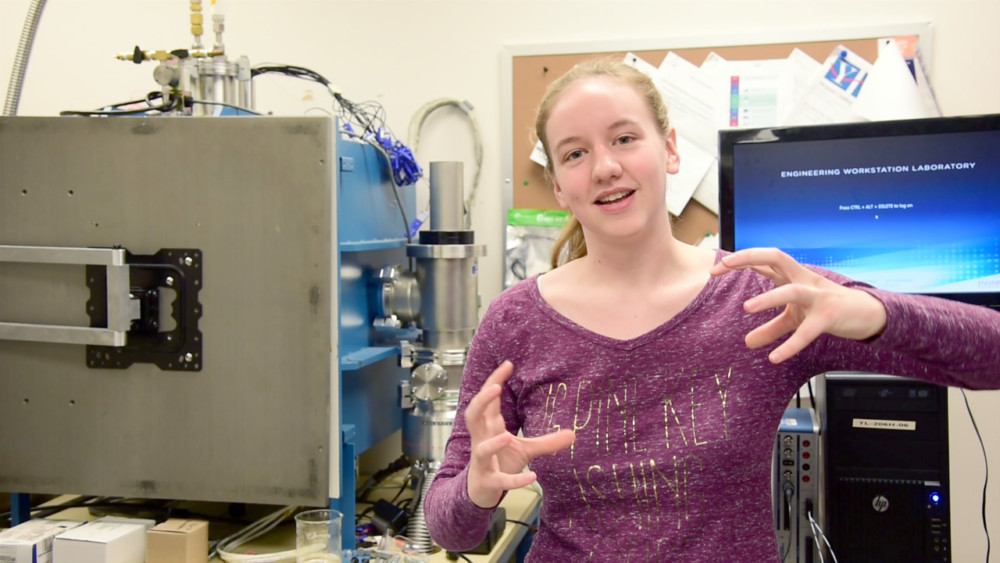By Paul Wood
The News-Gazette, Champaign-Urbana, Ill.
WWR Article Summary (tl;dr) Each week, staff writer Paul Wood chats with a high-tech entrepreneur. This week, he chats with Dawn Haken. Haken is a leader of students working on the UI’s contribution to the CubeSail mission, a technology demonstration of the UltraSail solar-sailing concept.
The News-Gazette, Champaign-Urbana, Ill.
Question: This sounds complicated but useful.
Answer: It’s part of the CubeSat project, an attempt to make small satellites affordable and accessible. These are standardized small satellites, and lots of universities, companies and NASA centers have been building and launching these. CubeSail is a specific mission that was originally ready to go in 2011, but did not find a launch with the desired orbit. The student team has been replacing all the outdated hardware and retesting the satellite for the expected March launch. One of the difficult things about CubeSats is getting a ride on a rocket that gets you to a specific orbit. NASA offers these rides to us when they are available. Missions are designed to be flexible about their orbit choice if possible. About 80 percent of CubeSats are taken to the International Space Station along with supplies for the astronauts, and are deployed from there. Most others are secondary payloads; they hitch a ride along with really large commercial satellites.
Question: How is CubeSail getting to space?
Answer: It would be going up on an Electron, a brand new rocket from a company called Rocket Lab. It will launch out of New Zealand, and their goal is to cover the commercial small satellite launch segment. There was supposed to be another test launch this week, which was delayed until next year. Our launch is scheduled for March 2018. This rocket is unique in that it will be carrying only a bunch of CubeSats, and no large satellite.
Question: Who are you working with?
Answer: I’m the student leader for CubeSail, which is being built and tested by a team of students at the University of Illinois. The management group is CU Aerospace plus Professor Ghosh, the project manager on the university side. I make the schedules and testing plans, keep track of the progress on all the different subsystems of the satellite, meet with the subsystem team leaders every week and help with hardware in the lab when I’m needed.
Question: And the project has some grants?
Answer: The CubeSail experiment was originally developed with a Small Business Innovation Research grant. That went to CU Aerospace, and the UI was the subcontractor. Now we’re updating the satellite with newer hardware designed and tested at the University of Illinois, which will support the original experiment hardware.
Question: What’s the experiment?
Answer: It’s a solar sail experiment, measuring about 10 x 10 x 30 centimeters. It’s really two independent satellites locked together, with identical hardware except for the payload in the middle. Each satellite has a spool of solar sail in it, and the sail is connected between them. Once it’s up in space, we orient it so it’s perpendicular to Earth’s surface, and send it a command to deploy. The two satellites will separate from each other and unfurl a solar sail that’s 250 meters long and 8 centimeters wide. This experiment tests deployment and control over the sail by controlling the satellites at either end. The original intent was to do some more orbital maneuvers, but the launch that we have now is at 500 kilometers, which is not quite high enough. As a CubeSat, you can’t be too picky about your launch if you want to get to space eventually.
Question: And then?
Answer: What CU Aerospace is working toward is UltraSail, a concept mission with one large hub satellite in the center and a whole bunch of essentially windmill blades of solar sail material, each with a satellite at the end. This thing would be really huge. One of the problems of solar sail technology right now is you can accelerate it, but you’re pretty much going in one direction. If you want to go to Jupiter, for example, you can get to Jupiter, but then unless you have some thrusters to slow you down, you’ll shoot right past it. The real exciting thing about a mission like UltraSail is that you could use the solar sail power to do a rendezvous; to turn and slow down into an orbit around it without using lots of extra fuel.
Question: What are you going to do after you graduate?
Answer: Probably get a master’s degree in aerospace engineering. I would like to do systems engineering as a career. I would love to work for NASA, or maybe one of their contractors. SpaceX would be exciting — because I might be able to boss around my older brother there.
TECH TIDBITS … with DAWN HAKEN
Social media? Facebook, not Twitter. We have a private group, but it has not been very active lately.
Do you have any wearable electronics? No. I just carry a phone.
Favorite app? I do have a weather-prediction app for astronomy that I really like, Clear Sky Chart.
Books or digital device? Definitely a book.
Do you have a scientific hero? I have a lot of respect for the professor I work with, Dr. Ghosh.














































































































































































































































































































































































